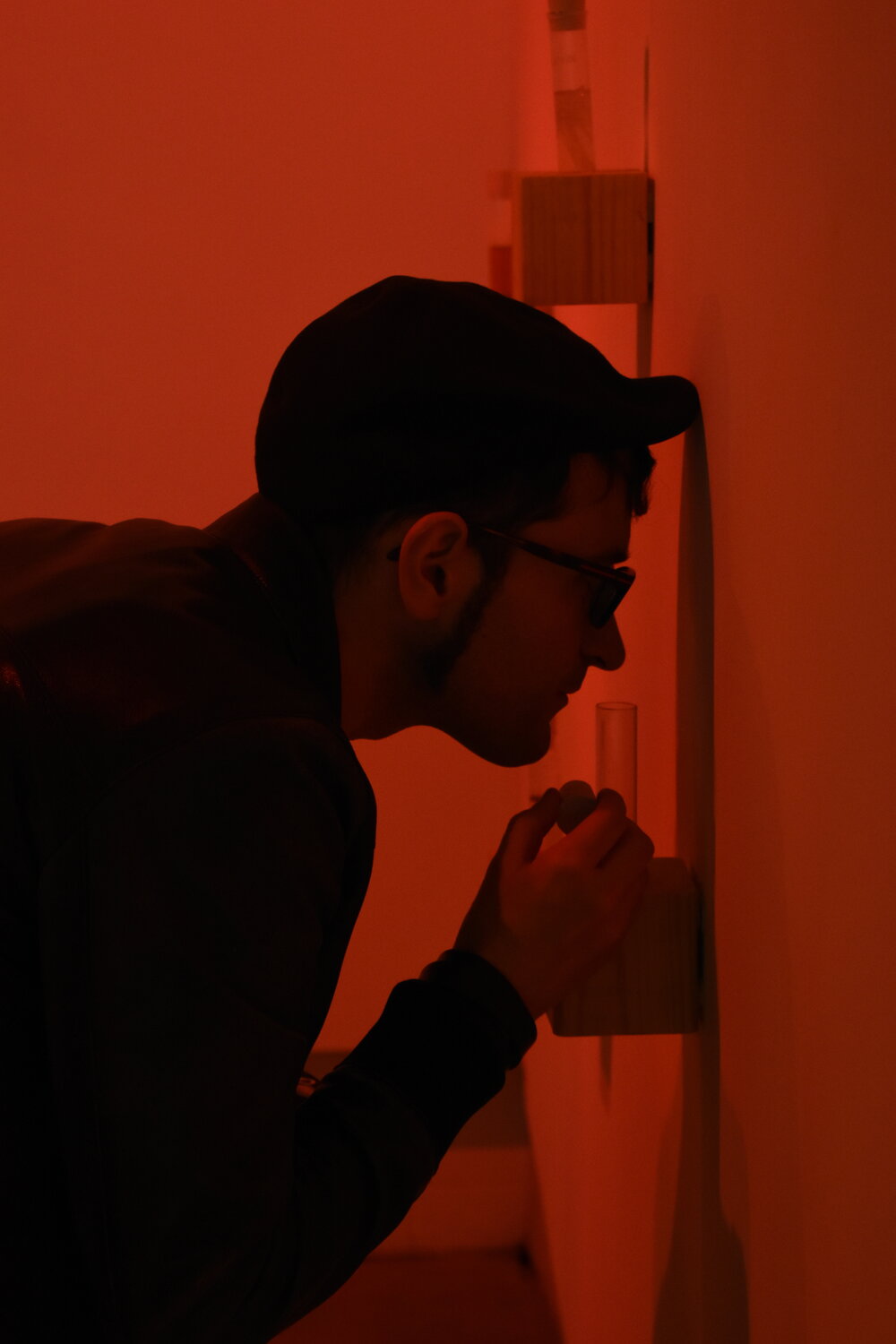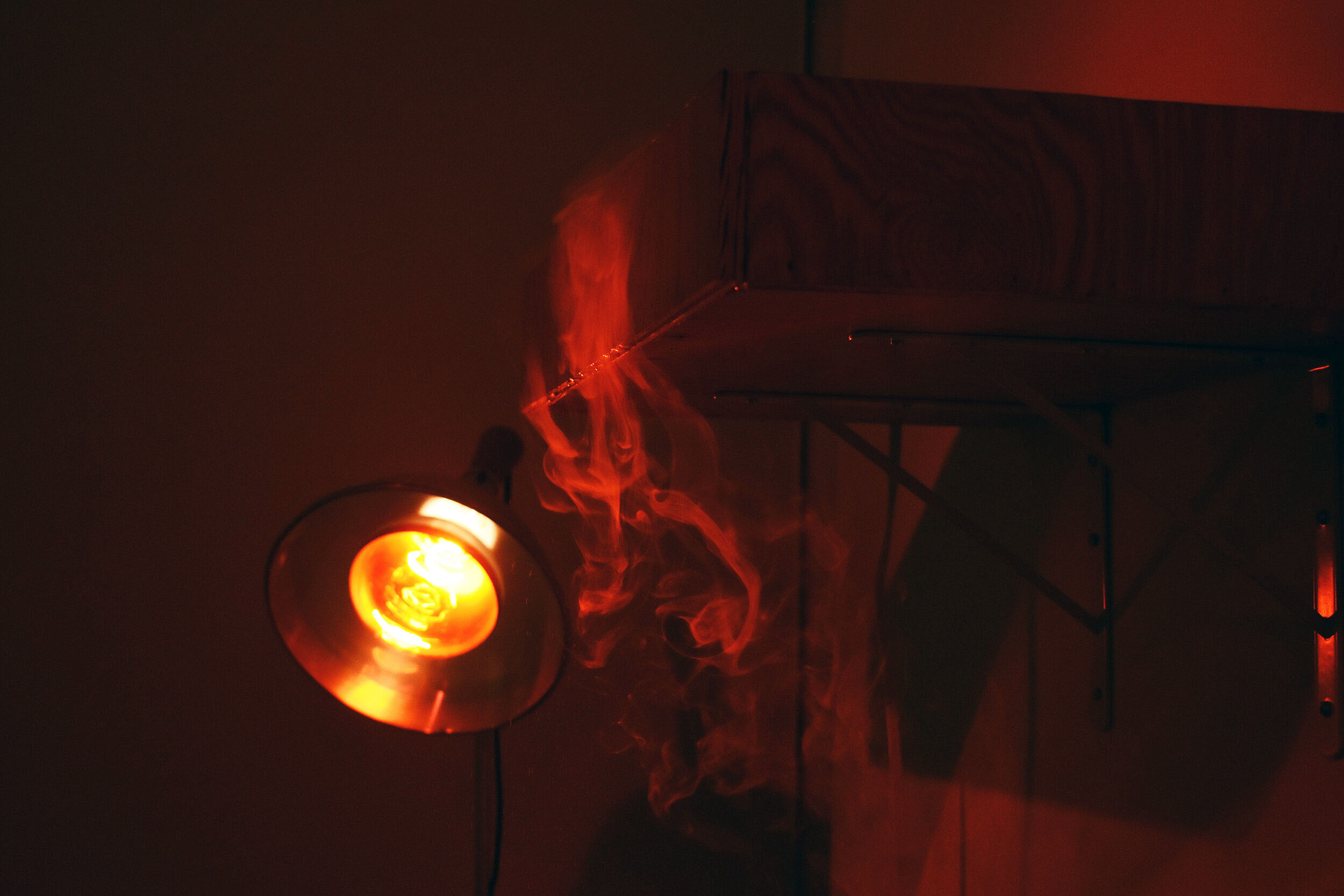Reservoir
Multisensory / 360º Video / Installation / Animation / Research
In Cayambe, Ecuador, the Hermoso glacier acts as a reservoir for downstream communities. Collaborating with a team of researchers from the National Science Foundation, we worked to connect individuals to the glacial environment through multisensory installations, animations, and 360° video. We aimed to transmute both the sensory qualia of the experience and elucidate the research data to bring viewers closer to the glacier.

My collaborator Betsy Ruth Byers and I pair glaciological and psychological research to create interactive and immersive art spaces that promote empathy between humans and the environment. Our work has employed virtual reality and sensory stimuli to place viewers in distressed environments of receding glaciers. In this project, a collaboration with National Science Foundation researchers, we focused on the Hermoso glacier in Cayambe, Ecuador.
This glacier exists as a part of a particularly vulnerable ecosystem. A healthy glacier must exist at a point between growth and melt, whereas it’s accumulation is greater than is ablation. The team’s current research data demonstrates that Hermoso is not at this point of equilibrium.


In an exhibition held at the Rosalux gallery, Reservoir, we used auditory, olfactory, and visual characteristics observed at the Hermoso glacier during a research trip in June of 2019 to offer viewers a bodily experience of the tropical glacier. Scents like sulfur were used to replicate the volcanic environment, and menthol was used to produce the sensation of cold. An atomizor was used to create a mist throughout the space, replicating the morning mist we hiked into each morning to reach the glacier.
Additionally, we attempted to both create connectedness to nature through perspective - taking and elucidate the research process by utilizing virtual reality and 360° video. One technique the researchers used to understand the glacier is the RT-Flux model, which examines how water moves through the glacial system and where it is lost. With footage captured at the Hermoso glacier, this video takes the viewer through the glacial system — as the viewer begins as air and moves downstream, taking the perspective of a water molecule.
Additionally, we attempted to both create connectedness to nature through perspective - taking and elucidate the research process by utilizing virtual reality and 360° video. One technique the researchers used to understand the glacier is the RT-Flux model, which examines how water moves through the glacial system and where it is lost. With footage captured at the Hermoso glacier, this video takes the viewer through the glacial system — as the viewer begins as air and moves downstream, taking the perspective of a water molecule.
Collaborating with scientists gave us a significant opportunity to observe first-hand the collection of scientific data and to partner directly with colleagues working in the field. This project purposefully overlaps the boundaries between art and science, aiming to delineate the ways in which the fields of science and art intersect to mutually benefit one another. Art can offer a subjective place to explore concerning viewpoints that are often an immediate consequence to learning about scientific data regarding climate change.
The work in this exhibition is supported by the National Science Foundation under Grant No. 1758854. The interdisciplinary team consists of principal investigators Dr. Jeff LaFrenierre, Dr. Crystal Ng, Dr. Daniel Stanton, Dr. Andrew Wickert, and Dr. Li Li. Any opinions, findings and conclusions or recommendations expressed in this material are those of the artists and do not necessarily reflect the views of the National Science Foundation.
The work in this exhibition is supported by the National Science Foundation under Grant No. 1758854. The interdisciplinary team consists of principal investigators Dr. Jeff LaFrenierre, Dr. Crystal Ng, Dr. Daniel Stanton, Dr. Andrew Wickert, and Dr. Li Li. Any opinions, findings and conclusions or recommendations expressed in this material are those of the artists and do not necessarily reflect the views of the National Science Foundation.